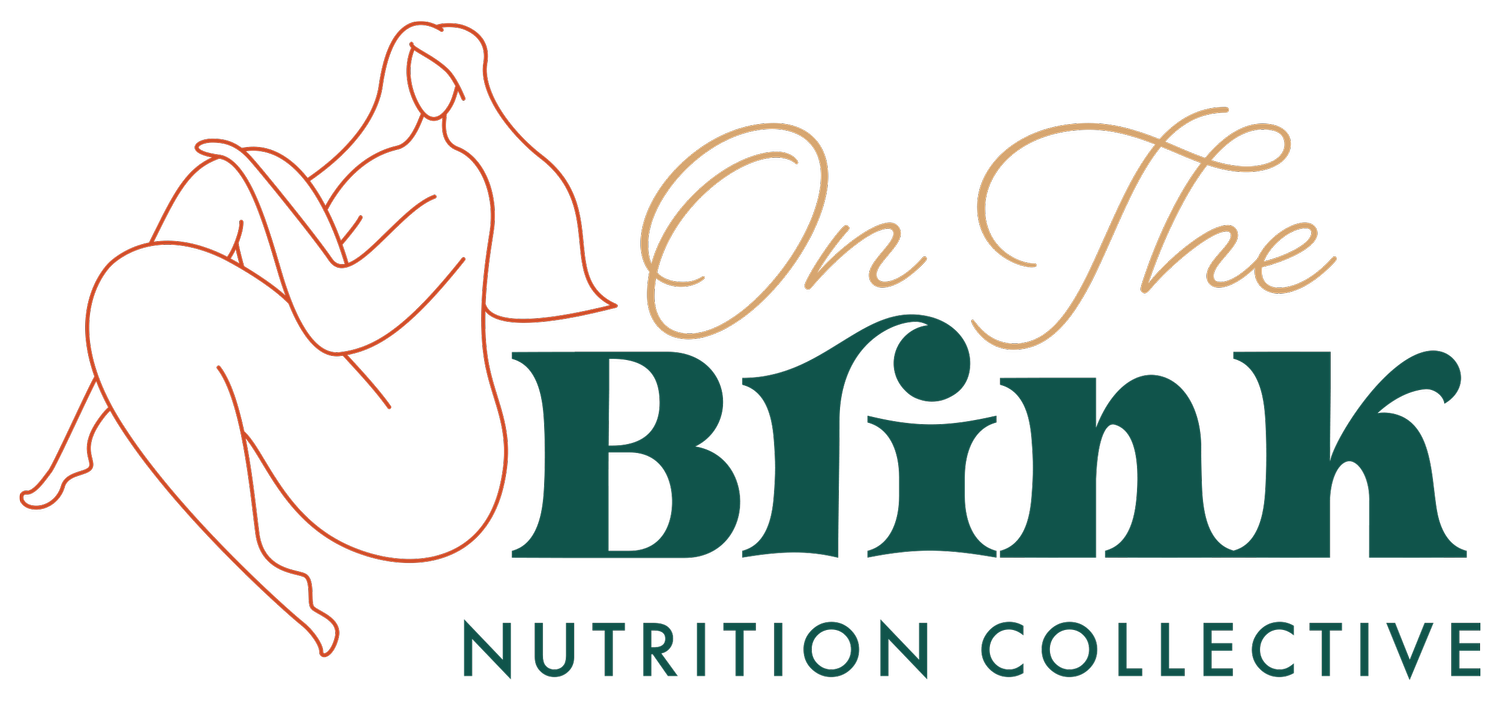Establishing A Regular Eating Pattern
In the work of eating disorder recovery and moving away from dieting, helping someone feel safe and supported to take in adequate nourishment is a foundational purpose of nutrition therapy. This effort focuses on making sense of learned food behaviors and noticing (in a nonjudgmental way) emotions that are linked to eating.
Individuals who have been conditioned by culture or attachment figures to restrict intake, may feel overwhelmed and fearful at the idea of eating even one bite more than they are “supposed to”. If the nutrition therapist comes into the session with an initial plan in the name of nutrition adequacy, the client would probably never return for follow-up. Because anything more than the least amount of food possible can feel terrifying and completely unachievable.
If you or a loved one is working to make peace with food and untangle from the conditioning of diet culture, you are called to come to terms with the fact that we, as humans, live in bodies that depend on adequate, consistent sources of energy throughout the day. Just the other day, I heard another dietitian lament with her client, "How difficult it is to be in a body that needs to eat on a regular basis." And, I would add, "how difficult it is to live in a culture that shames us for finding pleasure and comfort with fullness."
Establishing a regular eating pattern is the foundation upon which other positive changes in your eating habits can be based.
A regular eating pattern helps to repair what may feel like a broken relationship you have with food and your body. Regular eating provides structure and rebuilds trust through routine. It may feel daunting and difficult because change feels like threat to a nervous system entrenched in automated dieting thoughts and behaviors. With practice, the new behavior of eating on a regular basis will require little energy or conscious thought to keep it in place.
Regular eating intervals are important because they...
Provides structure to your day
Help prevent an energy deficit which results in the need for "make-up" eating (ie binge or “overeating”) later in the afternoon/evening. Not eating enough earlier in the day results in a biological drive and primal-based (survival) eating at the end of the day. This drive is what has kept humans alive from the beginning of our existence. However, it doesn't feel great to eat most of our food later in the day.
Help to challenge rules from diet culture that tell us there are only certain “safe” and “appropriate” times to eat.
Keeps your blood sugar levels and metabolism steady and minimizes feelings of tiredness, dizziness and irritability.
Tips for Regular Eating:
Start with foods that feel safe.
Plan your meal and snack options in advance.
Give yourself permission to choose between these options.Notice thoughts and other obstacles that prevent you from eating on a regular basis. Journal about these barriers and talk to a professional.
Experiment with eating your first meal within 1 hour of waking up.
Experiment with time intervals between eating episodes. At first, aim not to go longer than 4 hours without eating.
Consider carrying a snack with you in the car, your bag, in your desk drawer or in your locker.
This beginning work of reclaiming a peaceful relationship with food invites you to call upon an attitude of curiosity and compassion.
Notice any part of you that feels frustrated, scared, judgmental, and the need to control or correct. Those are parts of you that push back on your healing work and are telling you something. They feel threatened and are speaking up in defense. Turn to those feelings with interest and care. And keep at it anyway.
What would it take for you to acknowledge that your body needs to eat throughout the day? What kind of support do you need to commit to the practice of eating at regular intervals?
Need help? Reach out and schedule a free Discover Call.
